A C-type lectin collaborates with a CD45 phosphatase homolog to facilitate West Nile virus infection of mosquitoes
- PMID: 20797779
- PMCID: PMC2954371
- DOI: 10.1016/j.cell.2010.07.038
A C-type lectin collaborates with a CD45 phosphatase homolog to facilitate West Nile virus infection of mosquitoes
Abstract
West Nile virus (WNV) is the most common arthropod-borne flavivirus in the United States; however, the vector ligand(s) that participate in infection are not known. We now show that an Aedes aegypti C-type lectin, mosGCTL-1, is induced by WNV, interacts with WNV in a calcium-dependent manner, and facilitates infection in vivo and in vitro. A mosquito homolog of human CD45 in A. aegypti, designated mosPTP-1, recruits mosGCTL-1 to enable viral attachment to cells and to enhance viral entry. In vivo experiments show that mosGCTL-1 and mosPTP-1 function as part of the same pathway and are critical for WNV infection of mosquitoes. A similar phenomenon was also observed in Culex quinquefasciatus, a natural vector of WNV, further demonstrating that these genes participate in WNV infection. During the mosquito blood-feeding process, WNV infection was blocked in vivo with mosGCTL-1 antibodies. A molecular understanding of flaviviral-arthropod interactions may lead to strategies to control viral dissemination in nature.
Copyright 2010 Elsevier Inc. All rights reserved.
Figures
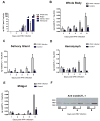
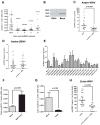
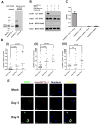
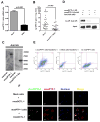
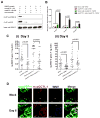
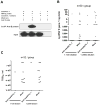
Similar articles
-
mosGCTL-7, a C-Type Lectin Protein, Mediates Japanese Encephalitis Virus Infection in Mosquitoes.J Virol. 2017 Apr 28;91(10):e01348-16. doi: 10.1128/JVI.01348-16. Print 2017 May 15. J Virol. 2017. PMID: 28250133 Free PMC article.
-
Small RNA responses of Culex mosquitoes and cell lines during acute and persistent virus infection.Insect Biochem Mol Biol. 2019 Jun;109:13-23. doi: 10.1016/j.ibmb.2019.04.008. Epub 2019 Apr 5. Insect Biochem Mol Biol. 2019. PMID: 30959110 Free PMC article.
-
The insect-specific Palm Creek virus modulates West Nile virus infection in and transmission by Australian mosquitoes.Parasit Vectors. 2016 Jul 25;9(1):414. doi: 10.1186/s13071-016-1683-2. Parasit Vectors. 2016. PMID: 27457250 Free PMC article.
-
The Spread of the Mosquito-Transmitted West Nile Virus in North America and Europe.Microb Biotechnol. 2025 Mar;18(3):e70120. doi: 10.1111/1751-7915.70120. Microb Biotechnol. 2025. PMID: 40035176 Free PMC article. Review.
-
West Nile virus and other mosquito-borne viruses present in Eastern Europe.Pathog Glob Health. 2018 Jul;112(5):233-248. doi: 10.1080/20477724.2018.1483567. Epub 2018 Jul 6. Pathog Glob Health. 2018. PMID: 29979950 Free PMC article. Review.
Cited by
-
A Critical Role for CLSP2 in the Modulation of Antifungal Immune Response in Mosquitoes.PLoS Pathog. 2015 Jun 9;11(6):e1004931. doi: 10.1371/journal.ppat.1004931. eCollection 2015 Jun. PLoS Pathog. 2015. PMID: 26057557 Free PMC article.
-
Effect of C-type lectin 16 on dengue virus infection in Aedes aegypti salivary glands.PNAS Nexus. 2024 May 16;3(5):pgae188. doi: 10.1093/pnasnexus/pgae188. eCollection 2024 May. PNAS Nexus. 2024. PMID: 38813522 Free PMC article.
-
Comparative analysis of C-type lectin domain proteins in the ghost moth, Thitarodes xiaojinensis (Lepidoptera: Hepialidae).Insect Sci. 2019 Jun;26(3):453-465. doi: 10.1111/1744-7917.12564. Epub 2018 Feb 22. Insect Sci. 2019. PMID: 29274206 Free PMC article.
-
Negative-mode mass spectrometry in the analysis of invertebrate, fungal, and protist N-glycans.Mass Spectrom Rev. 2022 Nov;41(6):945-963. doi: 10.1002/mas.21693. Epub 2021 May 6. Mass Spectrom Rev. 2022. PMID: 33955035 Free PMC article. Review.
-
Identification and functional analysis of C-type lectin from mosquito Aedes albopictus in response to dengue virus infection.Parasit Vectors. 2024 Sep 4;17(1):375. doi: 10.1186/s13071-024-06453-9. Parasit Vectors. 2024. PMID: 39232769 Free PMC article.
References
-
- Alonso A, et al. Protein tyrosine phosphatases in the human genome. Cell. 2004;117:699–711. - PubMed
-
- Arnold JN, Dwek RA, Rudd PM, Sim RB. Mannan binding lectin and its interaction with immunoglobulins in health and in disease. Immunol Lett. 2006;106:103–110. - PubMed
-
- Baldwin TA, Ostergaard HL. Developmentally regulated changes in glucosidase II association with, and carbohydrate content of, the protein tyrosine phosphatase CD45. J Immunol. 2001;167:3829–3835. - PubMed
-
- Blandin S, Shiao SH, Moita LF, Janse CJ, Waters AP, Kafatos FC, Levashina EA. Complement-like protein TEP1 is a determinant of vectorial capacity in the malaria vector Anopheles gambiae. Cell. 2004;116:661–670. - PubMed
Publication types
MeSH terms
Substances
Grants and funding
LinkOut - more resources
Full Text Sources
Other Literature Sources
Molecular Biology Databases
Research Materials
Miscellaneous

